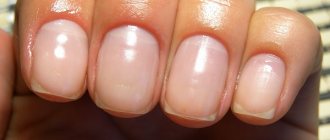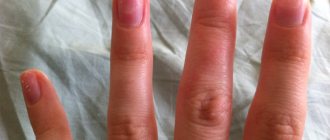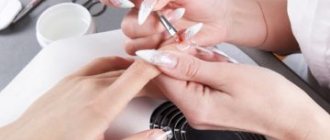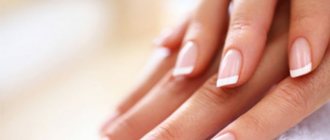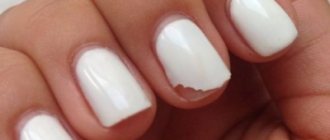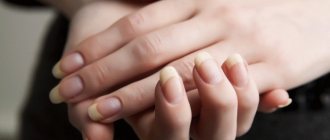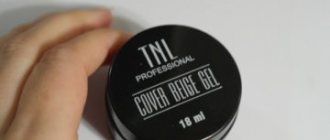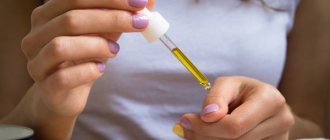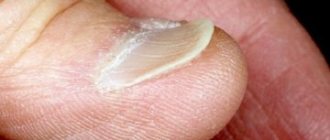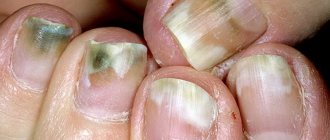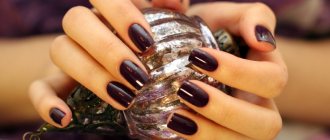Huge yellow or black nails on the hands and feet that resemble animal claws are not a very pleasant sight. They can be so hard that they cannot be cut off, they disfigure legs, and cause horror in people. Thick nails are so hard that they cannot be cut with scissors. Summer shoes are becoming unavailable. For women, this is generally a tragedy. They don’t know what to do about it, panic and hysteria begin.
Why did the nail plate on the big toe of each foot change its structure and become thicker? Thickening and changing color of nails can provoke various diseases.
Causes and symptoms of thickening:
Remedy for fungus
1. The most common cause of this problem is fungus . The symptoms of fungus are very easy to recognize, as the toes begin to itch first.
An unpleasant odor emanates from the feet and the appearance of the nails deteriorates. It is easy to catch this disease. While visiting beauty salons, gym, solarium, swimming pool. More careless is wearing someone else's shoes. What to do if the nail on your big toe has turned slightly yellow and thicker?
The fungus can be easily treated with such a remedy as Cream-Zdorov. Even if you don’t have a fungus, it won’t cause any harm, and prevention won’t hurt. More details here
2. Impaired lymph circulation is the second cause of this problem. It usually affects the toenails. Elephantiasis of the feet disrupts the uniform supply of nutrients, because the toes experience hypoxia, the nail plate becomes much thicker, and then darkens.
Thickening and yellowing of the nail
3. This problem can be caused by diabetes . During the course of this disease, the blood supply is disrupted, the nail on the big toe experiences a lack of nutrients, becomes thicker, and its color and structure change.
4. Endocrine diseases change the color and thickness of the nail plate. When the endocrine system is disrupted, the normal production of hormones is disrupted. Some are produced in excess, others, on the contrary, are not enough. If there are not enough hormones responsible for the growth and health of nails, then they become thick and change color.
Types and causes of irregularities
Horizontal or vertical grooves and stripes may appear on the nail plate. Please note these defects.
- A vertical stripe that stretches across the entire nail
- from cuticle to tip - may occur due to injury to the nail plate. Impacts, pinching, and prolonged exposure to chemicals can lead to such consequences. If you have recently had a manicure, perhaps the compositions used by the master are not suitable for you, or the procedure itself was not done professionally.
- The appearance of tubercles and horizontal stripes
speaks of more serious reasons. These are metabolic disorders, poor nutrition, gastrointestinal diseases, and vitamin deficiency. Lumpy nails can also appear due to poor manicure; in this case, you just have to wait for the nail plate to grow back. Another reason why the nail has become uneven is serious damage affecting the tissues of the nail plate. In this case, there is a risk that the deformation will remain forever.
- Upward curved nail plate
can develop due to genetic diseases, anemia, hormonal disorders due to thyroid diseases and a number of other diseases.
- If the nail bends down
, the reason lies in the mechanical impact on the plate (tight shoes, gloves). Less often this happens due to heredity, but we advise you to pay attention to whether relatives have the same defect. Bend down the free edge of the nail can also occur due to hormonal disorders in the body and due to vitamin deficiency. In the latter case, the nail plate will not only be curved downwards, but also brittle or peeling.
- Small indentations on the nail
, as if it had been pricked with a needle, dermatologists call it “thimble-like wear of the nail.” This condition accompanies people with psoriasis, lichen planus, and alopecia.
- Furrow Bo
is a medical term that refers to the longitudinal groove from one nail fold to another. Most often, the defect occurs due to improper nail care, due to unprofessional manicure, during which the nail was seriously damaged, and it is also a symptom of a fungal disease. The appearance of such unevenness on the nail also indicates disorders of the cardiovascular system or the presence of a serious infection in the body.
- Thickening of the nail
(complete or partial) - a cosmetic defect that can be either hereditary or acquired. Among the acquired reasons why the nail has become thicker, fungus is the leading one. A fungal infection settles in the skin folds. The presence of hangnails and wounds facilitates infection and creates a favorable environment for infection. In this case, you may first notice that the fingernail or toenail has become thicker, then the fungus will lead to a change in color, the nail plate will become brittle, begin to flake/crumple, an unpleasant itch will appear, and the surrounding tissue may become inflamed.
By paying close attention to the appearance of your nails, you can maintain their healthy appearance and find out about problems in the body in time.
Folk remedies for thickening of nails:
Traditional medicine
Before making baths and compresses, it is worth remembering that not all diseases can be cured with folk remedies. Traditional methods usually treat nail plate fungus. Apple cider vinegar along with potassium permanganate is added to the water in which you wash your feet. Such baths need to be done for exactly a week to restore a healthy appearance to your nails. Tea tree oil is a good remedy for fungus. Treatment: you need to smear yellowed toenails every day. A herbal mixture consisting of horsetail, oak bark and calendula, is successfully used for baths and has a quick and long-lasting effect. Garlic is a remedy known for its antibacterial effect. In order to fight fungal diseases, garlic must be mixed with alcohol to make a tincture, then wipe your feet with it two to three times a day. For a good effect, it is better to use two methods of treatment at once. For example, first take a bath, then smear your nails with oil.
After taking baths, you need to treat your steamed toenails with oil. To treat internal causes, use: Ivy leaves , doused with a liter of vodka or alcohol. They are first infused for three days, then taken one tablespoon per day. This helps normalize the functioning of the endocrine system.
Field clove tea cleanses the blood and normalizes the functioning of the adrenal glands. It is an excellent remedy for treating many diseases, but this type of clove grows only in France.
If the nail has become thicker due to a violation of the outflow of lymph, then it is treated with plantain decoction . Making a decoction is very simple. You need to pour one hundred grams of dried plantain leaves with a liter of water, bring to a boil, then simmer over low heat for another ten minutes. You need to take three tablespoons per day.
Seeing a doctor
Detecting the first symptoms of onycholysis is a good reason to visit the clinic. Any stage of the disease requires consultation with a dermatologist. During the diagnosis and treatment of the disease, the patient may require the opinions of other specialists: an endocrinologist, a surgeon, a therapist.
Ignoring the symptoms of pathology can lead to multiple damage to the nail plates on the patient’s hands and feet, the formation of numerous foci of infection and damage to other tissues and systems of the body.
Are you experiencing symptoms of onycholysis?
Only a doctor can accurately diagnose the disease. Don't delay your consultation - call
Diagnosis and treatment of thickened nails
Before starting treatment, you need to identify the exact cause, and not guess it, self-medicating and wasting time.
To do this, you need to contact a dermatologist and get a referral from him for the appropriate tests. After passing all the tests, when the reason becomes known. You may have to change your doctor. A thick nail, or rather a small piece of it, is taken for analysis. Thickening of the nails, which appears due to fungus, lymphostasis, and lack of essential vitamins, can be treated with folk remedies. But if the thickening occurs due to liver disease, diabetes, cardiovascular diseases, diseases of the nervous system, it is better to treat them using the methods prescribed by the doctor.
Symptoms on arms and legs
The clinical picture of the disease is the same for all types of pathology: the nail plate is separated from the bed from the free edge in the distal or lateral sections to the nail hole. The color of the plate changes from flesh-colored to gray-white due to air entering the subungual space. With the development of pathogenic microflora in the resulting free space, a further change in color is possible: yellow becomes the result of bacterial infections, brown - the formation of a colony of microfungi, green - damage to Pseudomonas aeruginosa.
Bacterial infections affect the structure and strength of the nail plate. The surface of the nails loses its shine, becomes rough and gradually becomes deformed. The subungual space is filled with dirt and keratin. This leads to the development of hyperkeratosis, characterized by an unpleasant odor. In advanced stages of the pathology, a focus of secondary inflammation may develop. Detachment of part of the nail is called partial onycholysis, while the entire plate is called total.
Why do longitudinal grooves form on nails?
The reasons are associated with deterioration of blood circulation, metabolic processes in the extremities, slower cell renewal, injuries, and lack of nutrients.
Thus, the cause of longitudinal grooves on the fingernails is often a poorly executed manicure. For example, improper removal of the cuticle leads to damage to the plate in the matrix area. And then later, as the nail grows, its surface becomes not so smooth. The reason may also be due to constant nail extensions. When applying artificial coatings to a plate, irritating chemicals are used that destroy the top layer.
Other reasons why longitudinal grooves appear on the nails include:
- fungal infection or onychomycosis;
- psoriasis, lichen planus;
- unbalanced diet, lack of protein, nutrients (zinc, iron, vitamins A, E, group B);
- indigestion, incomplete absorption of nutrients;
- dryness, dehydration;
- stress, depression;
- diabetes;
- rheumatoid arthritis;
- diseases of the heart, blood vessels, nervous system;
- bad habits;
- contact with detergents and cleaning agents.
On the feet, especially longitudinal grooves on the nails are expressed on the big toe. This is due to the fact that its area is much larger. It experiences strain when walking, is more susceptible to injury, and is more likely to get fungal infections. Vertical stripes on the toenails occur when wearing tight shoes or excessive sweating.
A single vertical groove may be the initial symptom of onychorrhexis, or longitudinal splitting of the nail. Onychorrhexis is caused by peripheral vascular pathologies, Darier's disease, myxoid cysts and other disorders.
Longitudinal grooves do not always indicate serious problems; they are often a manifestation of age-related changes. After 55 years, due to decreased blood circulation, slower metabolic processes, and the rate of cell renewal, such stripes are found in most people. In older people, nails become dull, yellowish, and thicken.
What does this mean and what do nail plates with transverse and longitudinal waves look like?
Most often, the thumbs of the left or right hands suffer from the problem. If the pathology is associated with internal disorders, then as it develops it will affect the nail plates on other fingers. There are two types of waviness in nails:
- longitudinal (it is also called vertical, the waves go from the cuticle to the free edge of the nail, deformations are difficult to notice on the nails, significant longitudinal waves signal the presence of serious diseases);
- transverse (is a symptom of a disease; in medical practice such deformations are called Bo’s furrows; transverse waves are always more pronounced than longitudinal waves, accompanied by looseness of the nail and a change in the shade of the plate).
Important! Transverse waves on the nails are always a sign of the presence of a disease in the body. Therefore, if a deviation is detected, immediately contact a specialist for diagnosis.
Preventive measures
Of course, anyone can develop thick and yellow nail plates, but in order to minimize the risk and, in general, never encounter this problem, you need to follow simple rules and adhere to basic preventive measures.
- Shoes must be selected according to size. As a rule, shoes, boots or sneakers should not be too tight or cause any other discomfort.
- In the bathhouse, swimming pool or gym, you should always use rubber or silicone slippers.
- Always practice good personal hygiene.
- Pedicure accessories, like any other hygiene item, should belong only to you.
- To make your pedicure strong and always in perfect condition, do not forget to do strengthening baths and compresses.
- In case of even the most minor injury, it is worth using an antiseptic.
- And don’t forget about vitamin complexes, vegetables and fruits.
Naturally, thick and yellowed nail plates are unlikely to cause admiring glances; moreover, as mentioned above, almost all external changes can manifest themselves from the inside and indicate serious diseases. Therefore, you should not neglect your beauty and health, because sometimes it is enough to adhere to generally accepted preventive measures and hygiene rules so that your pedicure is always in perfect condition.
Elimination of unevenness with manicure: nuances of the procedure
A properly done manicure will help you disguise existing unevenness. However, it can only be done with the permission of a doctor and in the absence of serious injuries, inflammation or infectious diseases.
How to disguise wavy stripes on nails:
- Use only pastel-colored varnishes. You can choose compositions with small sparkles or pearlescent shimmer.
- Be sure to apply a base coat before applying your chosen color of polish.
- As an alternative to classic varnishes, you can choose gel polish (it is better to entrust such a manicure to a professional with special equipment).
- Use medicinal varnishes and leveling coatings when working.
- Perform a manicure according to all the rules, i.e. disinfect tools, use special scissors or softening compounds to remove cuticles, and take care of personal hygiene.
- You should not use brightly colored varnishes, as they will only highlight the uneven surface of the nail.
Wavy stripes on the nail plates can appear in both women and men. There are many reasons for the development of such a deviation. Some of them are associated with external factors (for example, injuries or poor-quality manicure), and some with internal ones (diseases of the endocrine system, stress, fungal infections, gastrointestinal diseases, lack of vitamins and minerals, etc.).
Whatever the reason, do not be lazy to consult a doctor for advice. The doctor will help not only establish a diagnosis, but also choose the correct treatment for such a deformity.
Prevention of vertical stripes on nails
Nutrition plays an important role in the treatment of any disease. Deficiency of vitamins, minerals, malnutrition, all this affects the condition of the nail plate.
You should review your diet and include healthy foods:
- Green leafy vegetables, fresh fruits containing vitamins B1, B2, B3, B5, B8, vitamin C, A and D.
- Protein. Include foods containing complete protein in your menu: soy, lentils, beans, meat, eggs.
- Calcium. Eat daily: cottage cheese, cheese, yogurt, milk.
Vertical stripes on nails can be caused by calcium deficiency - Products that promote nail growth: tomatoes, nettle tea, molasses.
- Avoid junk food. Fried, fatty foods that have no nutritional value should be replaced with nutritious and healthy foods.
- Drink more water. Drinking 8-10 glasses daily will help get rid of nail defects.
- Take a multivitamin supplement containing zinc and omega-3 fatty acids.
- Use biotin supplements or eat more foods containing it. Biotin is found in sufficient quantities in egg yolks, carrots, soybeans, peanuts and almonds.
- Do not bite your nails or break cuticles.
- When doing housework, use latex gloves.
To prevent the appearance of defects, you should properly care for the nail plate:
- Reduce the use of varnishes and solvents.
- After removing the varnish, the plates should be moistened with lotion, softening oil with vitamin E.
- Polishing the nail plate should be done with a soft brush so as not to injure the hole and the plate itself.
- Before varnishing, use a base coat containing gelatin and protein to level the surface.
Treatment of nail onycholysis
Pathology requires complex therapy. The key task is to treat the underlying disease against which onycholysis of the nails develops. The allergic type of damage to the nail plate requires consultation of the patient with a nutritionist or gastroenterologist to adjust the functioning of the digestive system through diet. Correcting the imbalance of minerals and vitamins will reduce the likelihood of further progression of onycholysis.
The traumatic type of pathology involves daily removal of the growing tissue of the exfoliated area, followed by disinfection of the subungual space and protection of the bed with an antibacterial patch.
Large area detachments are treated surgically. After removing the nail plate, antibacterial and antiseptic dressings are applied to the bed. The operation allows surgeons to remove hyperkeratotic deposits, dirt and the consequences of hematoma development. Nail restoration is carried out using gelatin solutions of various concentrations.
Bacterial and mycotic lesions of the nail are treated with alcohol solutions of aniline paints, antibacterial and antifungal drugs.
Diagnosis of vertical stripes on nails
Nails are derivatives and constituent parts of the skin. Their altered structure is not the only symptom of the onset of the disease. Initially, the doctor examines the nail plates, then prescribes an examination.
To do this you may need:
- Blood test (cost from 200 to 300 rubles).
- Urinalysis (cost in paid clinics from 200 to 300 rubles).
- Donating blood for sugar (cost from 200 to 300 rubles).
- Skin scraping to identify fungal infections (the cost of microscopic examination of samples is 800 rubles).
- If desired, samples are taken to assess the concentration of various vitamins in the body (one sample costs from 600 rubles).

